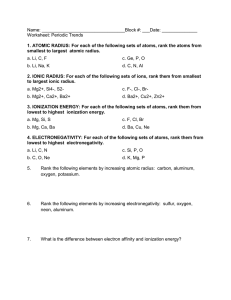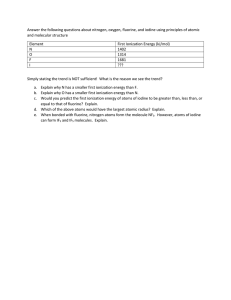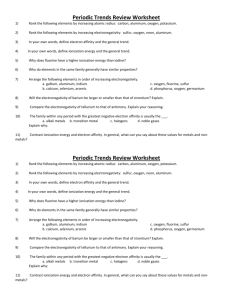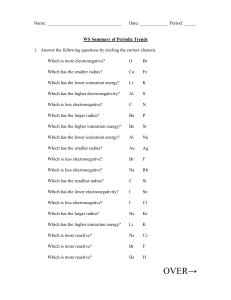Periodic Trends Worksheet: Atomic & Ionic Properties
advertisement
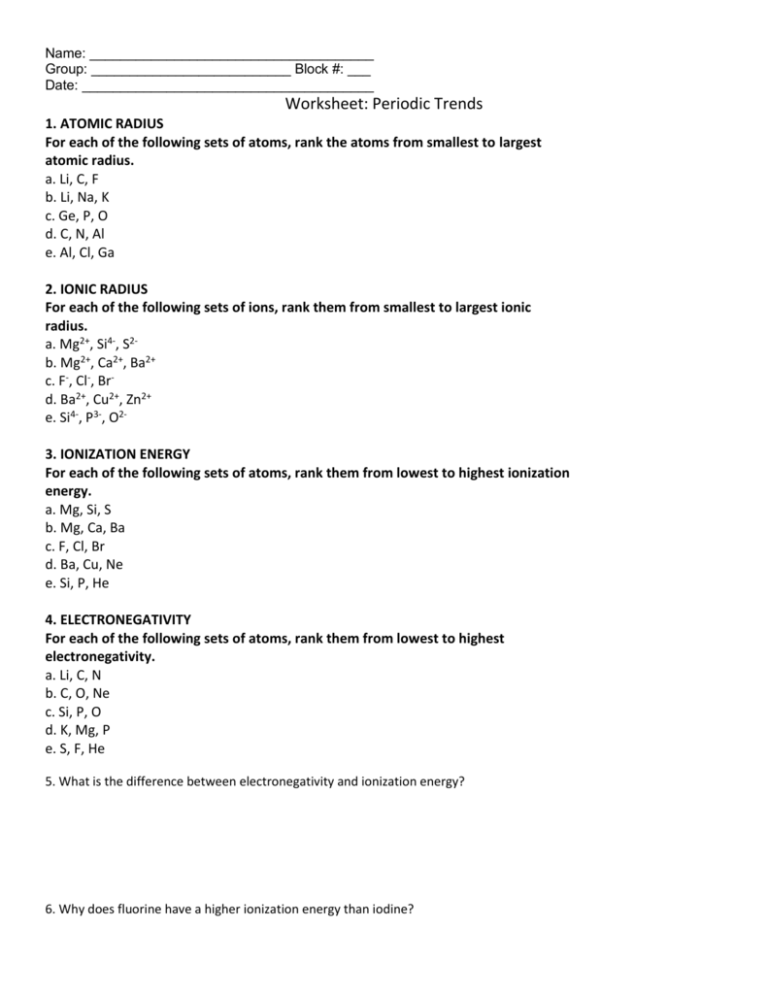
Name: _____________________________________ Group: __________________________ Block #: ___ Date: ______________________________________ Worksheet: Periodic Trends 1. ATOMIC RADIUS For each of the following sets of atoms, rank the atoms from smallest to largest atomic radius. a. Li, C, F b. Li, Na, K c. Ge, P, O d. C, N, Al e. Al, Cl, Ga 2. IONIC RADIUS For each of the following sets of ions, rank them from smallest to largest ionic radius. a. Mg2+, Si4-, S2b. Mg2+, Ca2+, Ba2+ c. F-, Cl-, Brd. Ba2+, Cu2+, Zn2+ e. Si4-, P3-, O23. IONIZATION ENERGY For each of the following sets of atoms, rank them from lowest to highest ionization energy. a. Mg, Si, S b. Mg, Ca, Ba c. F, Cl, Br d. Ba, Cu, Ne e. Si, P, He 4. ELECTRONEGATIVITY For each of the following sets of atoms, rank them from lowest to highest electronegativity. a. Li, C, N b. C, O, Ne c. Si, P, O d. K, Mg, P e. S, F, He 5. What is the difference between electronegativity and ionization energy? 6. Why does fluorine have a higher ionization energy than iodine? 7. For each of the following elements, determine which ionization energy would show an unusually large increase a. Si b. K c. B 8. Why does chlorine form a 1- ion, while potassium forms a 1+ ion? 9. Determine the number of valence electrons in each of the following atoms a. Phosphorus b. Strontium c. Bromine d. Barium e. Argon Electron Configuration Review 1. Draw the orbital diagram and write the longhand configuration for the following elements: a. Titanium b. Silicon c. Rubidium 2. Give the shorthand electron configuration for each of the following elements or ions a. Cerium d. Bromine b. Platinum e. Cs+ c. Zirconium f. P3- 3. Determine which element is represented by each of the following electron configurations a. 1s2 2s2 2p6 3s2 3p6 4s2 3d10 4p6 5s2 4d7 b. [Xe]6s2 4f12 c. [Kr]5s2 4d10 5p3


